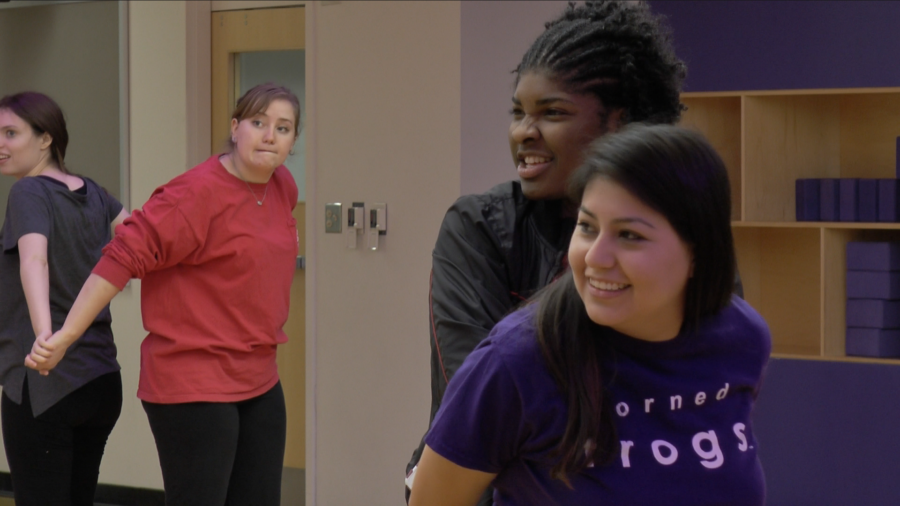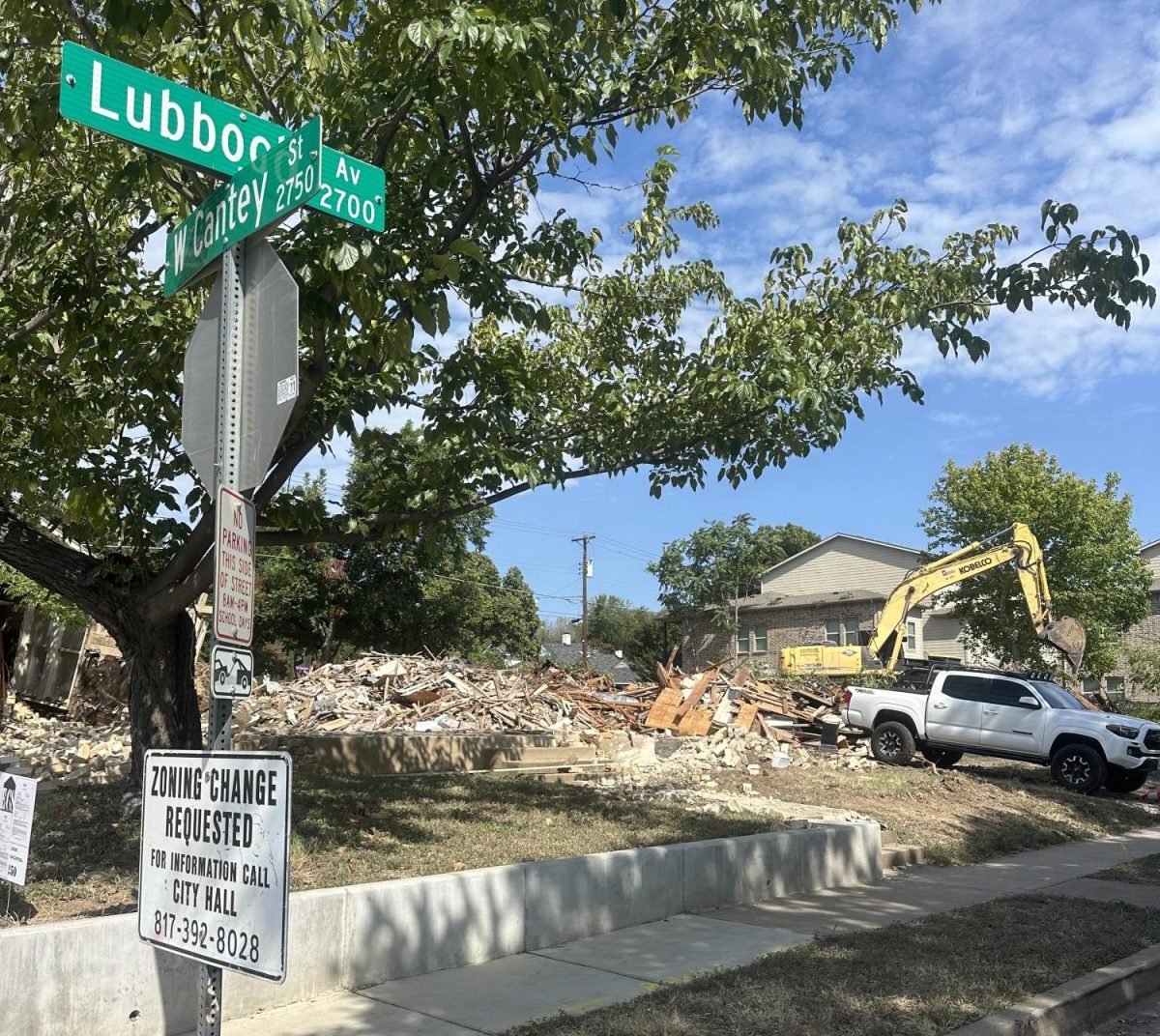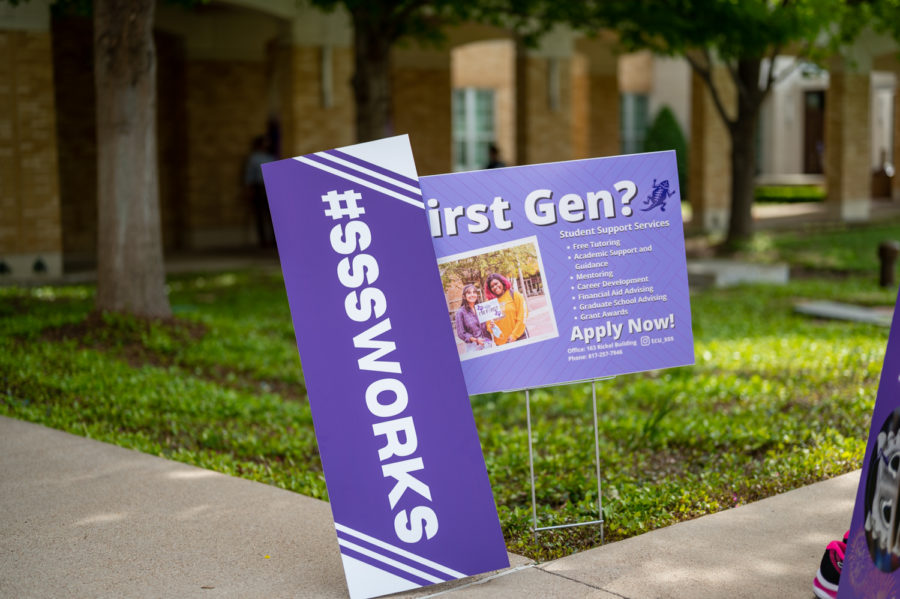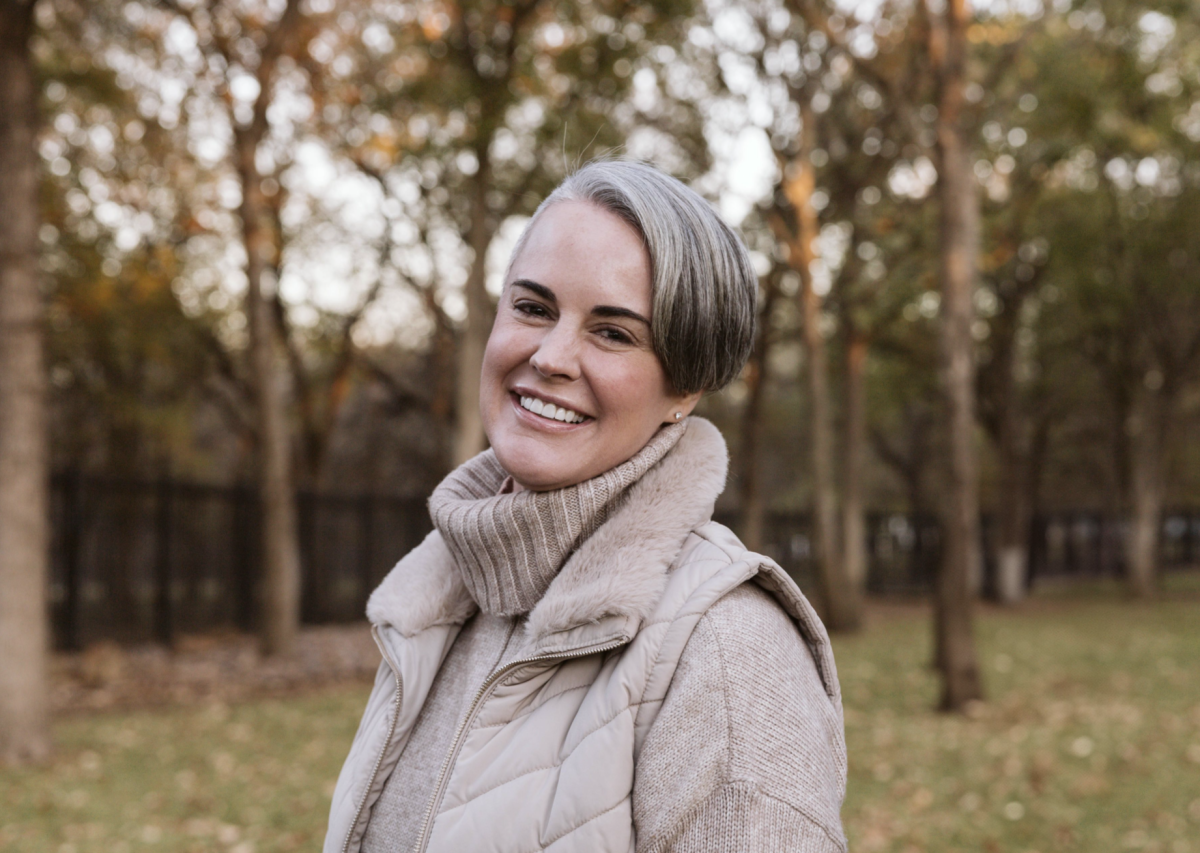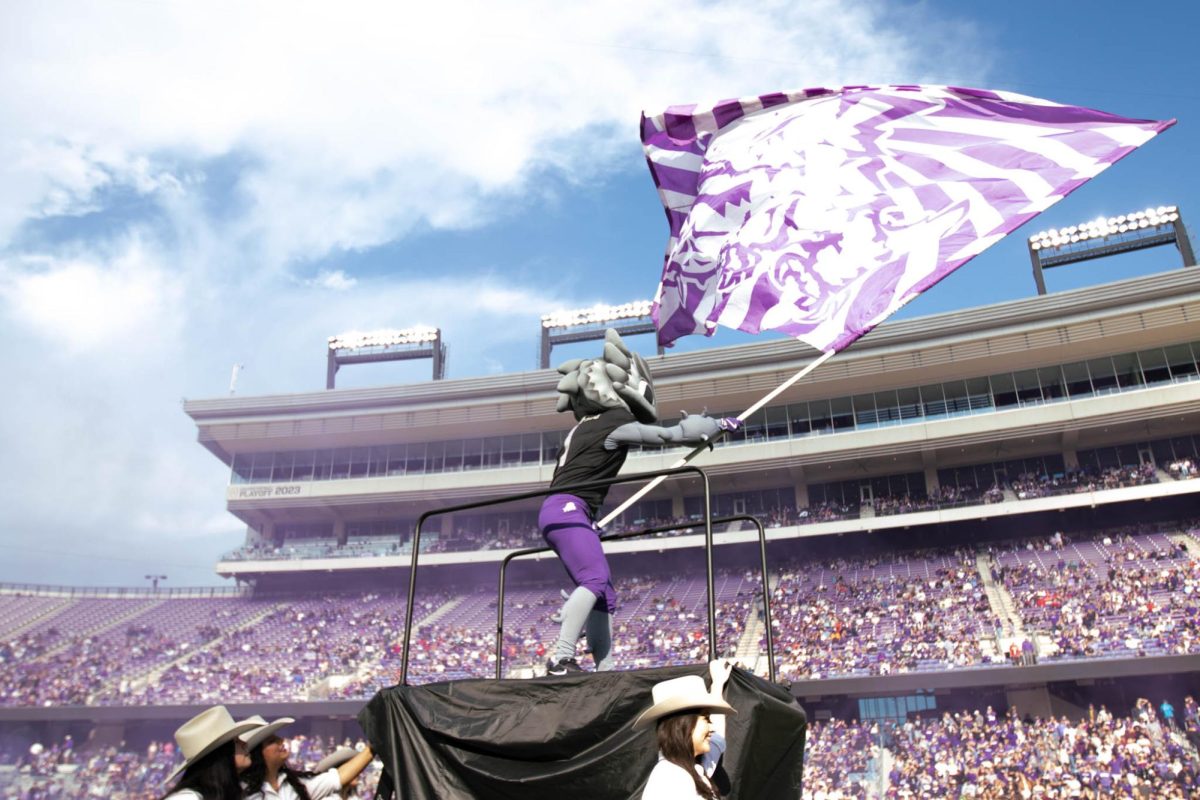The room blared with hip-hop music while students clapped their hands, slid and stepped to the fast beat. Students giggled as they fumbled with the routine and squeaked their shoes against the polished wood floors. They were taught a variety of unique dance styles from stepping and swing to salsa and interpretive dance. Although it may look like it, this isn’t a dance class. Diversity in Movement is part of Doctor Kristen Guillory’s Diversity and Social Justice course that moved students out of the classroom for a lesson on diversity through different types of movement. Guillory, who is part of the TCU social work adjunct faculty, said she wanted her class to not only recognize diversity in race and gender but to break out of their comfort zones. “That’s an opportunity to maybe touch someone you’ve never touched or–with the interpretive dance–to be in the space of someone maybe you don’t enter the space like that, but I have to in this moment,” Guillory said. The lesson included several guest instructors who shared their style by teaching short routines to the class, then sat down with students to talked about their experiences relating to social justice. One such teacher was Kane Kong, who demonstrated salsa dancing before moving on to talk about police brutality in America. Kong said he approaches the matter from the perspective of a father and passed on the same advice he gives his 19-year-old son. He told students that he has a lot of friends who are police officers and acknowledged that there are both good and bad officers, but it’s important not to provoke law enforcement during a tense encounter. The best way to handle it, he insisted, was to do as the officers say and handle any grievances peacefully in court, if necessary. “Yes, I back the blue,” Kong said. “But I also believe that as young black men, as young people as a whole … you’ve got to carry yourself with respect, with dignity in a way that doesn’t get anyone to place you in a position to be abused.” Adam McKinney, an assistant dance professor, led an interpretive dance where he had students use their bodies to express non-physical ideas like sexism, ableism, oppression and liberation. “What does sexism look like to you?” McKinney asked the class. As he called out these terms, students twisted and crouched into uncomfortable poses to represent threats, then crowded together in a ring to symbolize liberation. McKinney said bodies have been the target of oppression, but can also be used to break free of it. “We must also use our bodies to heal and to be the focus point through which we perform that healing as a contradiction to the oppression,” he said. Chanter Craig, who joined the class to teach stepping, talked about her long history with step and advised people to try new things and meet people with different backgrounds. “I think we’ve gotten away from learning new things without necessarily believing in them or agreeing with them; that’s not the obligation,” she said. “Being as knowledgeable as we can about as much as we can, we owe our brains that and we owe everyone else that’s different than we are that service.” Guillory said her main mission for this lesson was to get her students used to being uncomfortable, whether it be grooving to an unfamiliar rhythm or having a serious conversation about racism between peers.
Categories:
Diversity in Movement takes a step into social justice issues
By Shane Battis
Published Nov 3, 2017
Students learned to dance to new grooves in a lesson on diversity through dance. (Photo by Shane Battis)
More to Discover

